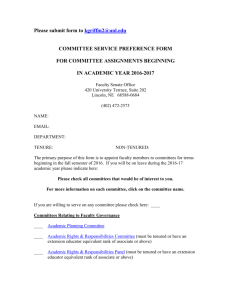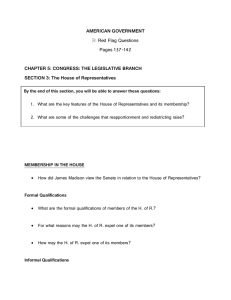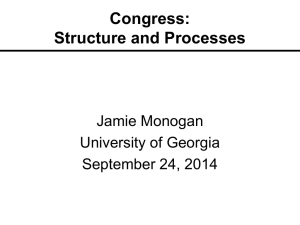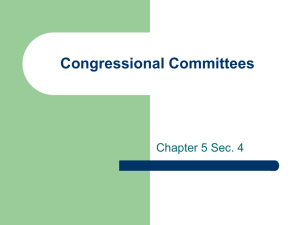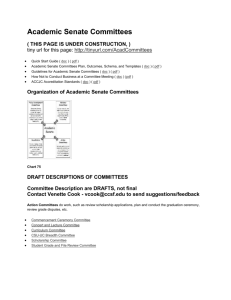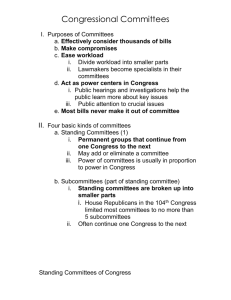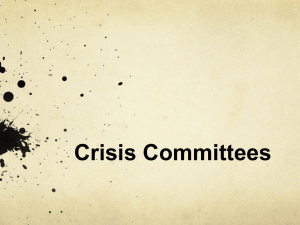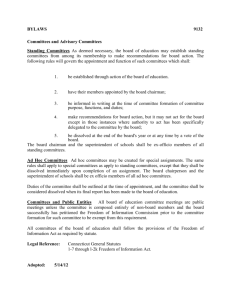How a Bill Becomes a Law
advertisement
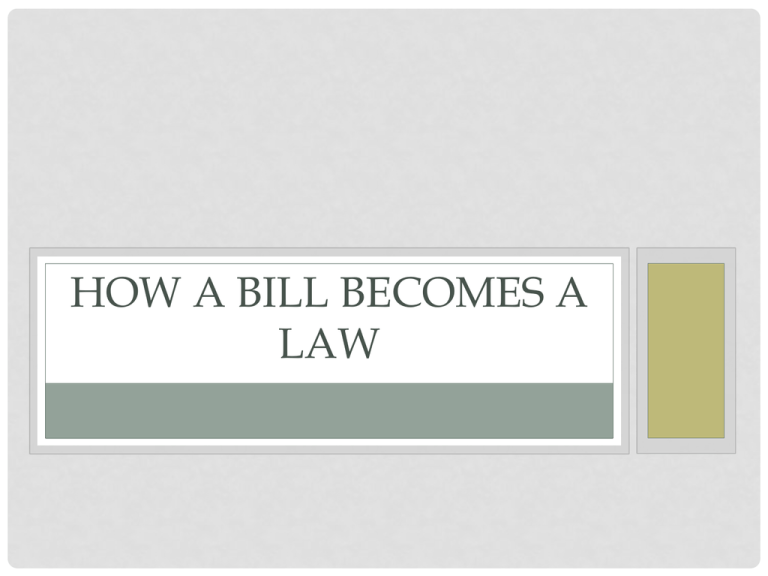
HOW A BILL BECOMES A LAW STANDING COMMITTEES • Standing Committees are permanent committees in the House or the Senate. • There are 20 in the House and 17 in the Senate today. • Bills receive the most attention and consideration in these committees. • Most standing committees review bills based on their subjects SUBCOMMITTEES • Standing committees are divided into subcommittees. • These do most of the work. • There are about 70 in the Senate and about 100 in the House. THE HOUSE RULES COMMITTEE • Controls the flow of bills to the floor. • “Screening device” for bills. • Before a bill can reach the floor of the House it must clear the House Rules Committee SELECT COMMITTEES • AKA Special Committee • These committees are usually set up for specific purposes and are only around for a limited amount of time. • They have served as investigation committees in the past (illegal gambling on Indian Reservations and Watergate Scandal). JOINT COMMITTEE AND CONFERENCE COMMITTEE • These are composed of members from both houses. • Example: Joint Committee on Taxation investigates the federal tax system and presents it’s findings to both chambers. • Before a bill can be sent to the president it must pass in both houses in the same form. Conference committees iron out the differences in the bill before the president can sign it. I’M JUST A BILL! • Im Just a Bill • Daily Grade: Open up to pages 343-356. • With a partner outline the steps that are taken for a bill to become a law!! WHAT IS A BILL? • A bill is a proposed law. • Bills can originate from: • People, in the executive branch, interest groups, etc.


